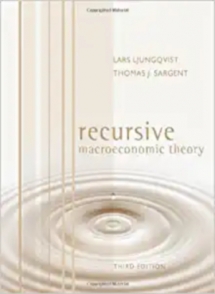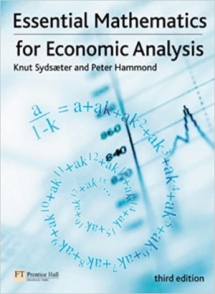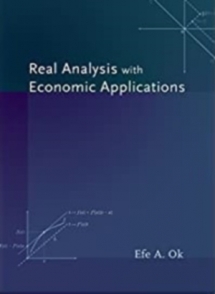 경제/경영
경제/경영
 경제
경제
분야별도서

A Guide to Econometrics 6th edition
- 저자Peter Kennedy
- 발행일2008-02-25
- 정가0원
- 페이지600 페이지
- ISBN978-1405182577
- 책소개
- 저자소개
- 목차
- 출판사 서평
This is the perfect (and essential) supplement for all econometrics classes--from a rigorous first undergraduate course, to a first master's, to a PhD course.
· Explains what is going on in textbooks full of proofs and formulas
· Offers intuition, skepticism, insights, humor, and practical advice (dos and don’ts)
· Contains new chapters that cover instrumental variables and computational considerations
· Includes additional information on GMM, nonparametrics, and an introduction to wavelets
Peter Kennedy
Peter Kennedy is Professor of Economics at Simon Fraser University. In addition to A Guide to Econometrics, he is author of Macroeconomic Essentials: Understanding Economics in the News, 2e (2000), and is Associate Editor of the International Journal of Forecasting, the Journal of Economic Education, and Economics Bulletin.
Preface.
Dedication.
1. Introduction.
1.1 What is Econometrics?.
1.2 The Disturbance Term.
1.3 Estimates and Estimators.
1.4 Good and Preferred Estimators.
General Notes.
Technical Notes.
2. Criteria for Estimators.
2.1 Introduction.
2.2 Computational Cost.
2.3 Least Squares.
2.4 Highest R2.
2.5 Unbiasedness.
2.6 Efficiency.
2.7 Mean Square Error (MSE).
2.8 Asymptotic Properties.
2.9 Maximum Likelihood.
2.10 Monte Carlo Studies.
2.11 Adding Up.
General Notes.
Technical Notes.
3. The Classical Linear Regression Model.
3.1 Textbooks as Catalogs.
3.2 The Five Assumptions.
3.3 The OLS Estimator in the CLR Model.
General Notes.
Technical Notes.
4. Interval Estimation and Hypothesis Testing.
4.1 Introduction.
4.2 Testing a Single Hypothesis: the t Test.
4.3 Testing a Joint Hypothesis: the F Test.
4.4 Interval Estimation for a Parameter Vector.
4.5 LR, W, and LM Statistics.
4.6 Bootstrapping.
General Notes.
Technical Notes.
5. Specification.
5.1 Introduction.
5.2 Three Methodologies.
5.3 General Principles for Specification.
5.4 Misspecification Tests/Diagnostics.
5.5 R2 Again.
General Notes.
Technical Notes.
6. Violating Assumption One: Wrong Regressors, Nonlinearities, and Parameter Inconstancy.
6.1 Introduction.
6.2 Incorrect Set of Independent Variables.
6.3 Nonlinearity.
6.4 Changing Parameter Values.
General Notes.
Technical Notes.
7. Violating Assumption Two: Nonzero Expected Disturbance.
General Notes.
8. Violating Assumption Three: Nonspherical Disturbances.
8.1 Introduction.
8.2 Consequences of Violation.
8.3 Heteroskedasticity.
8.4 Autocorrelated Disturbances.
8.5 Generalized Method of Moments.
General Notes.
Technical Notes.
9. Violating Assumption Four: Instrumental Variable Estimation.
9.1 Introduction.
9.2 The IV Estimator.
9.3 IV Issues.
General Notes.
Technical Notes.
10. Violating Assumption Four: Measurement Errors and Autoregression.
10.1 Errors in Variables.
10.2 Autoregression.
General Notes.
Technical Notes.
11. Violating Assumption Four: Simultaneous Equations.
11.1 Introduction.
11.2 Identification.
11.3 Single-equation Methods.
11.4 Systems Methods.
General Notes.
Technical Notes.
12. Violating Assumption Five: Multicollinearity.
12.1 Introduction.
12.2 Consequences.
12.3 Detecting Multicollinearity.
12.4 What to Do.
General Notes.
Technical Notes.
13. Incorporating Extraneous Information.
13.1 Introduction.
13.2 Exact Restrictions.
13.3 Stochastic Restrictions.
13.4 Pre-test Estimators.
13.5 Extraneous Information and MSE.
General Notes.
Technical Notes.
14. The Bayesian Approach.
14.1 Introduction.
14.2 What Is a Bayesian Analysis?.
14.3 Advantages of the Bayesian Approach.
14.4 Overcoming Practitioners’ Complaints.
General Notes.
Technical Notes.
15. Dummy Variables.
15.1 Introduction.
15.2 Interpretation.
15.3 Adding Another Qualitative Variable.
15.4 Interacting with Quantitative Variables.
15.5 Observation-specific Dummies.
General Notes.
Technical Notes.
16. Qualitative Dependent Variables.
16.1 Dichotomous Dependent Variables.
16.2 Polychotomous Dependent Variables.
16.3 Ordered Logit/Probit.
16.4 Count Data.
General Notes.
Technical Notes.
17. Limited Dependent Variables.
17.1 Introduction.
17.2 The Tobit Model.
17.3 Sample Selection.
17.4 Duration Models.
General Notes.
Technical Notes.
18. Panel Data.
18.1 Introduction.
18.2 Allowing for Different Intercepts.
18.3 Fixed versus Random Effects.
18.4 Short Run versus Long Run.
18.5 Long, Narrow Panels.
General Notes.
Technical Notes.
19. Time Series Econometrics.
19.1 Introduction.
19.2 ARIMA Models.
19.3 VARs.
19.4 Error-correction Models.
19.5 Testing for Unit Roots.
19.6 Cointegration.
General Notes.
Technical Notes.
20. Forecasting.
20.1 Introduction.
20.2 Causal Forecasting/Econometric Models.
20.3 Time Series Analysis.
20.4 Forecasting Accuracy.
General Notes.
Technical Notes.
21. Robust Estimation.
21.1 Introduction.
21.2 Outliers and Influential Observations.
21.3 Guarding Against Influential Observations.
21.4 Artificial Neural Networks.
21.5 Non-parametric Estimation.
General Notes.
Technical Notes.
22. Applied Econometrics.
22.1 Introduction.
22.2 The Ten Commandments of Applied.
Econometrics.
22.3 Getting the Wrong Sign.
22.4 Common Mistakes.
22.5 What Do Practitioners Need to Know?.
General Notes.
Technical Notes.
23. Computational Considerations.
23.1 Introduction.
23.2 Optimizing via a Computer Search.
23.3 Estimating Integrals via Simulation.
23.4 Drawing Observations from Awkward Distributions.
General Notes.
Technical Notes.
Appendix A: Sampling Distributions, the.
Foundation of Statistics.
Appendix B: All about Variance.
Appendix C: A Primer on Asymptotics.
Appendix D: Exercises.
Appendix E: Answers to Even-numbered Questions.
Glossary.
Bibliography.
Name Index.
Subject Index



 장바구니
장바구니




